This is not a book recommendation. Few people would want this book, and let’s face it, few need to. I occupy a pocket-sized niche. A niche committed to learning the particulars of Chinese history, living in China, yet unable to read the language. This book came to me by happenstance, way before I had any need for it, and indeed, it languished unnoticed on a high bookshelf, forgotten by everyone. But not forgotten by me.
Before we delve into that, let’s see where I lugged this weighty tome (yes it is also heavy) to settle down for an agreeably caffeinated afternoon.
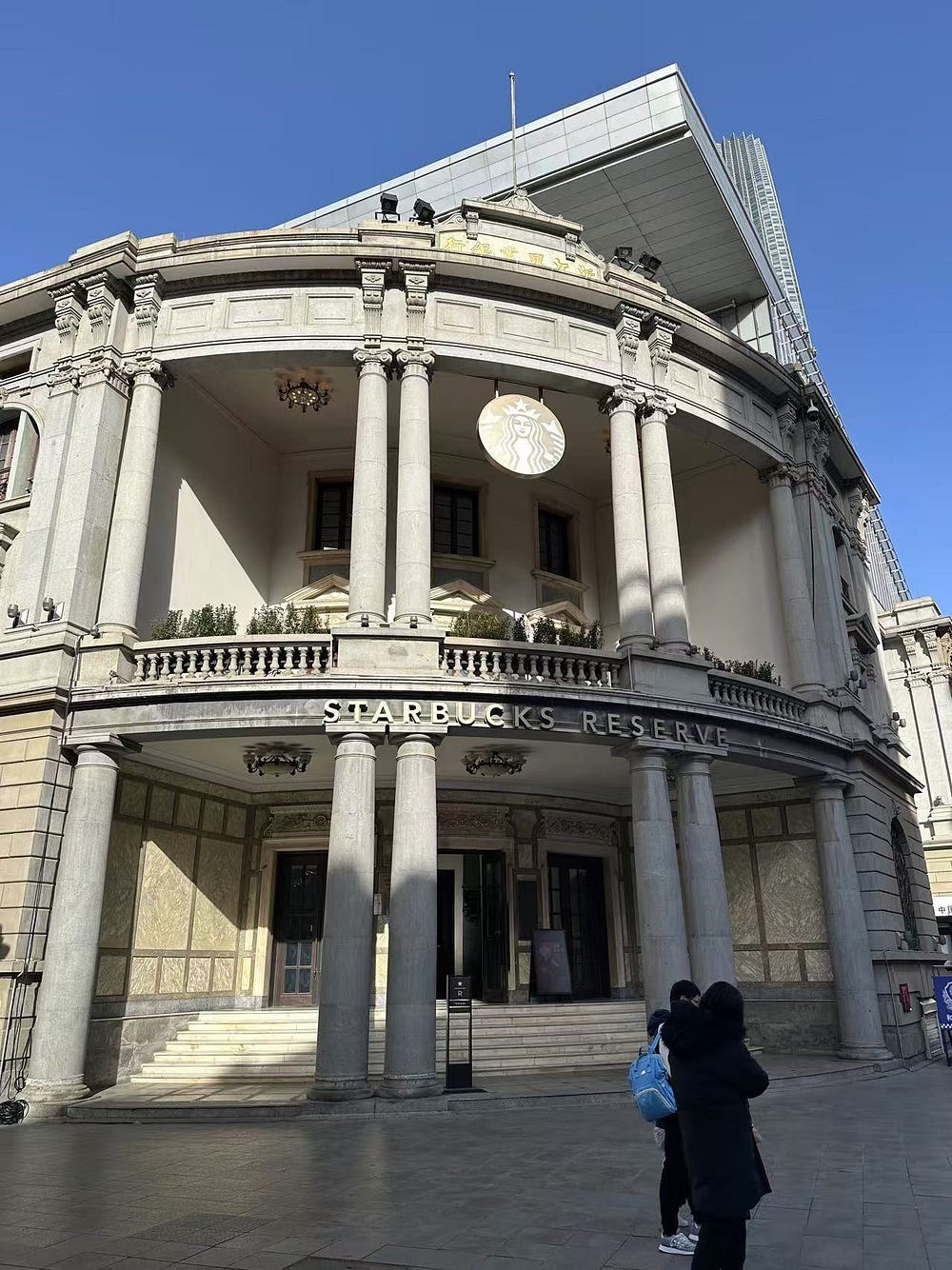
The building occupied by this special Starbucks Reserve was built in 1921 and occupied by the Xinye Bank until 1952. What happened between then and 1980 I don’t know, but it reopened briefly as a high end tailor and then as the Xinye Foreign Trade Mall. The building was abandoned and uncared for until designated a city heritage site in 1997, but it remained vacant until Starbucks took over the lease in 2019! Can you image? Just five years ago there was really nothing here.
You can see a little corner of Riverside 66, a modern shopping mall, sticking out over the top in the above picture. That opened in 2014, I know because my wife and I were in Tianjin that year. Hard to wrap my head around how time can just slide by.
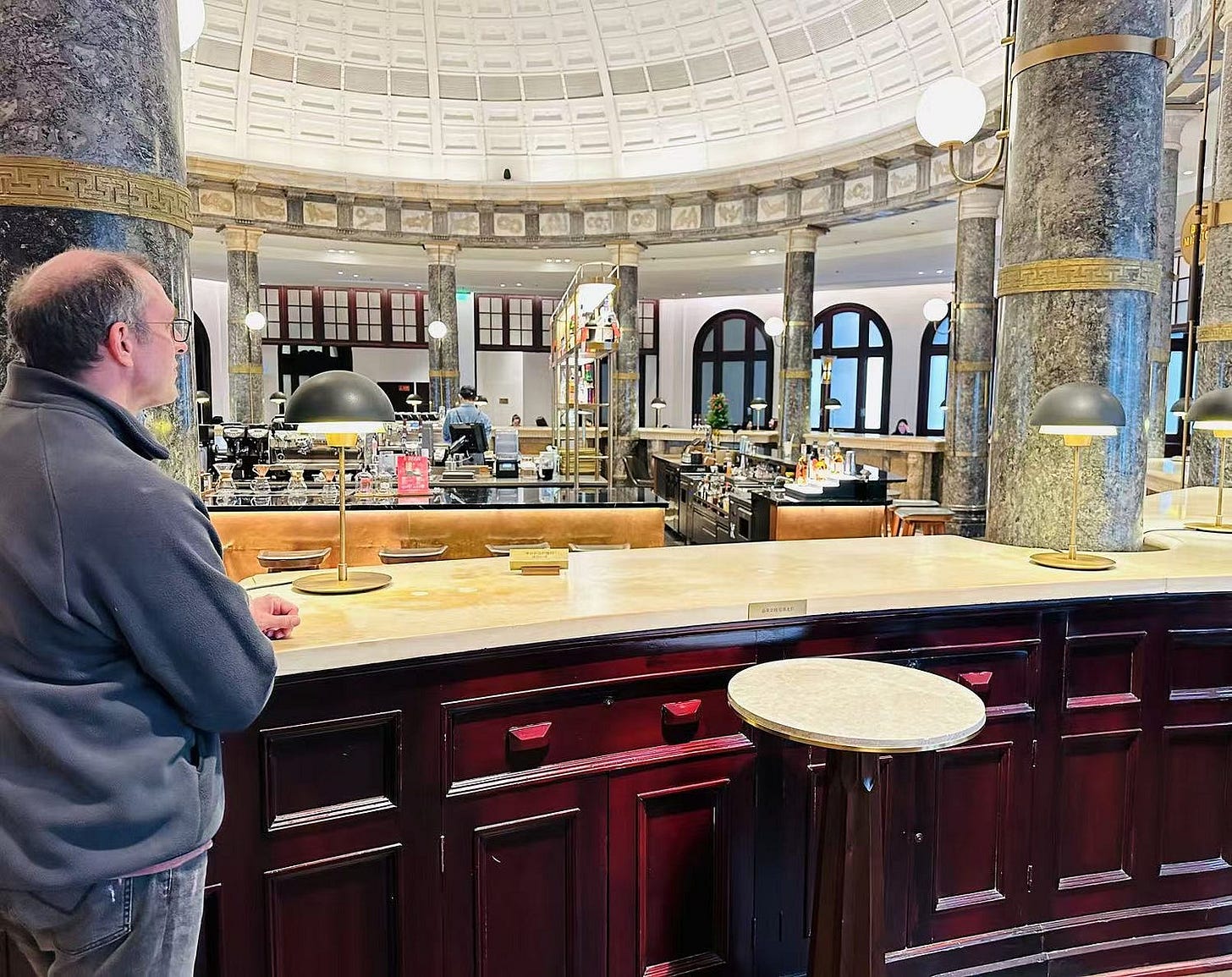
Starbucks has done a great job with this building, and they generally do a marvellous job integrating their brand and functions into culturally significant districts and streets. When you hear the Chinese express admiration for how well a culture is understood, respected, and even enhanced in a location, you know good work is being done. No other foreign coffee brand, no check that, I will say no foreign brand full stop, makes this effort as sincerely or succeeds so well as Starbucks.
Being a heritage site, many details must be respected and protected. The marble counters are vintage as are the columns and the arching ceiling. There are decorative corbels shielded by plastic so they can be appreciated but not damaged. The corridor where the offices would have been that wraps around the central public space has framed old pictures telling the story.
Among the preserved relics is the vault door. The vault was made by an American firm, Mosler Safe and Lock Co. Established in 1867 and only went out of business in 2001. Mosler safes were quite internationally well respected. This one is notable for being the hiding place of important party documents and member’s identities from Japanese forces in WWII, a move which saved a number of lives.
On to my book… A guide to China’s ancient technology and science is not everyone’s choice of light reading, but makes a solid secret weapon for those picking their way through China’s complex history of innovation and culture. Each chapter is dedicated to a scientific field, approved by the Institute of the History of Natural Sciences (HINS) and the Chinese Academy of Sciences (CAS).
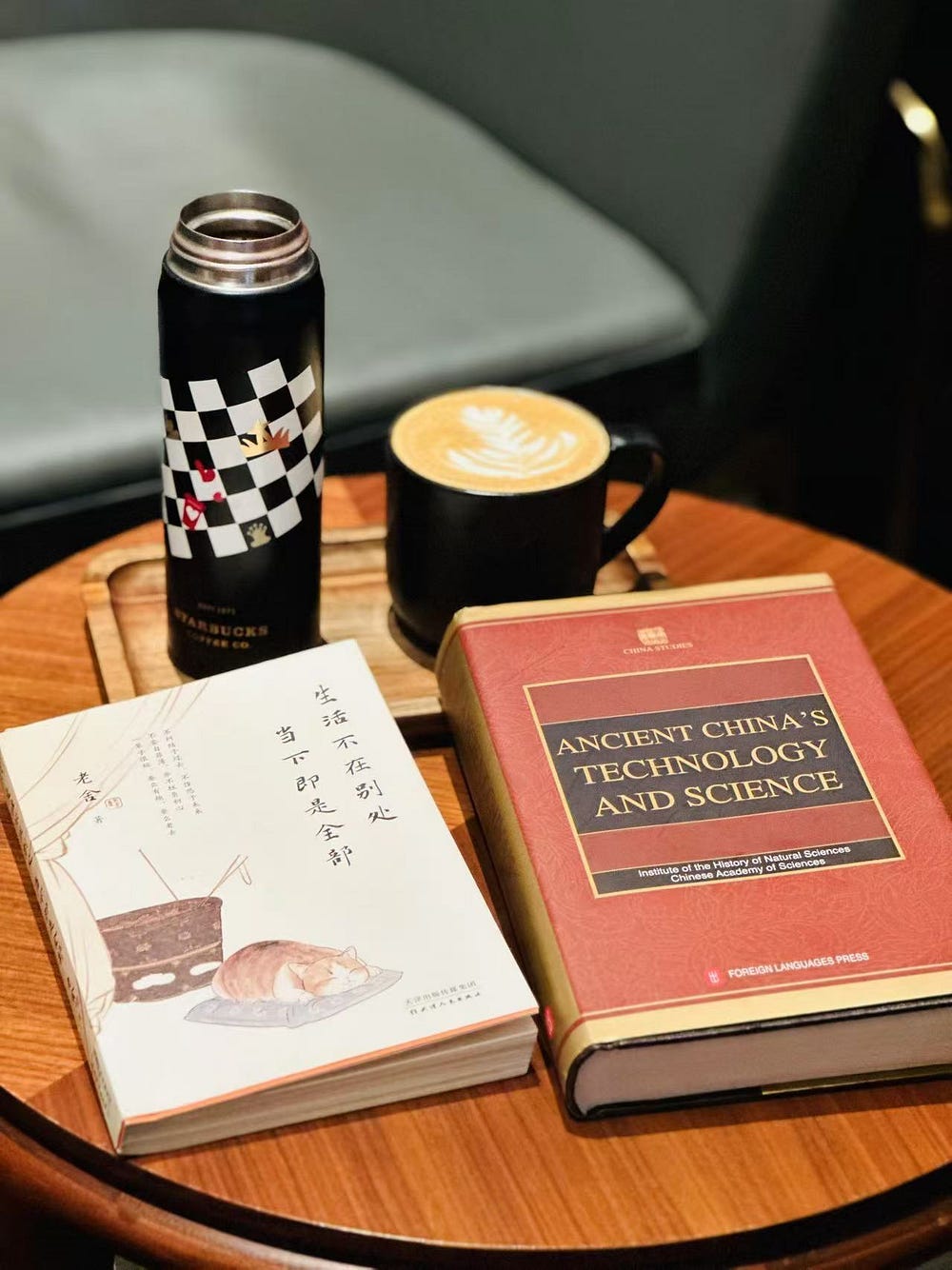
You get ten or so pages going over topics as diverse as porcelain, minerology, horticulture, acupuncture, ship building, and silk textiles. Artisans could control the iron oxide content of colored glazes to within less than a percent in 200BC, vegetable cultivation was a specialized profession by 400BC, and writing on tortoise shells describe “silk fabric” from 1600BC. Armed with such knowledge, you too can be the life of the party!
How did I come upon such a treasure? Before the opening of Shenzhen’s library, the best bookstore and only reliable source of good books in English was the Eslite Spectrum in the MixWorld Mall. I can’t help going nostalgic for a moment. What a great many memories. They had philosophy, history, art, even comic books — sorry — they had graphic novels and a Starbucks right inside the store. I got my copy of The Prince there. It closed in 2019. Now HAUS Nowhere occupies the space. But before closing I picked up some great deals, and this deal sat unnoticed for five years.
I devoted limited suitcase space to take this book from Shenzhen, through Beijing, to Tianjin. Would I do it again? Probably not, a lighter and smaller book would have been more practical. But practicality often isn’t why we do anything, is it?
You can find this book on Amazon here.
This is Binjiangdao, a famous walking commercial street. A bank would be located at the center of the retail action. Sure enough, the building on the right is the old Department Store. My Mother-in-law had an internship here learning how to be a salesperson before getting her first job. And if you go down the street to the left just a few minutes you will find the China House…

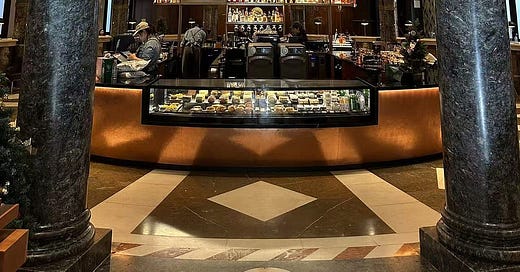



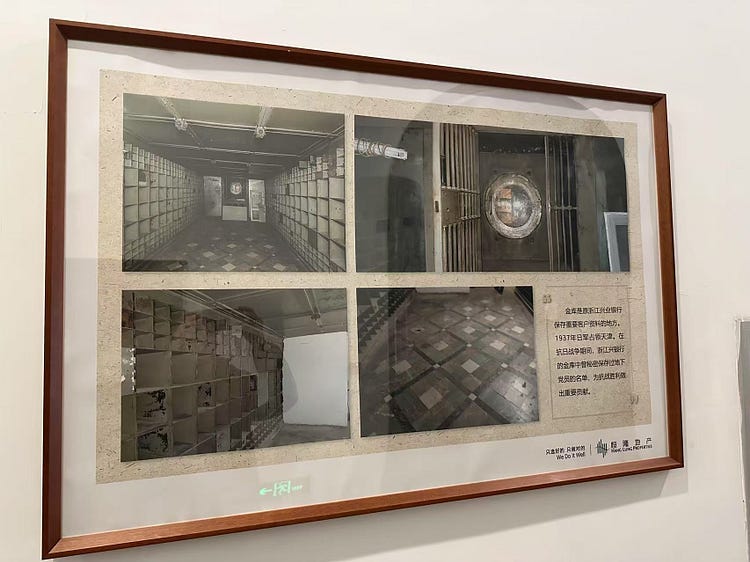
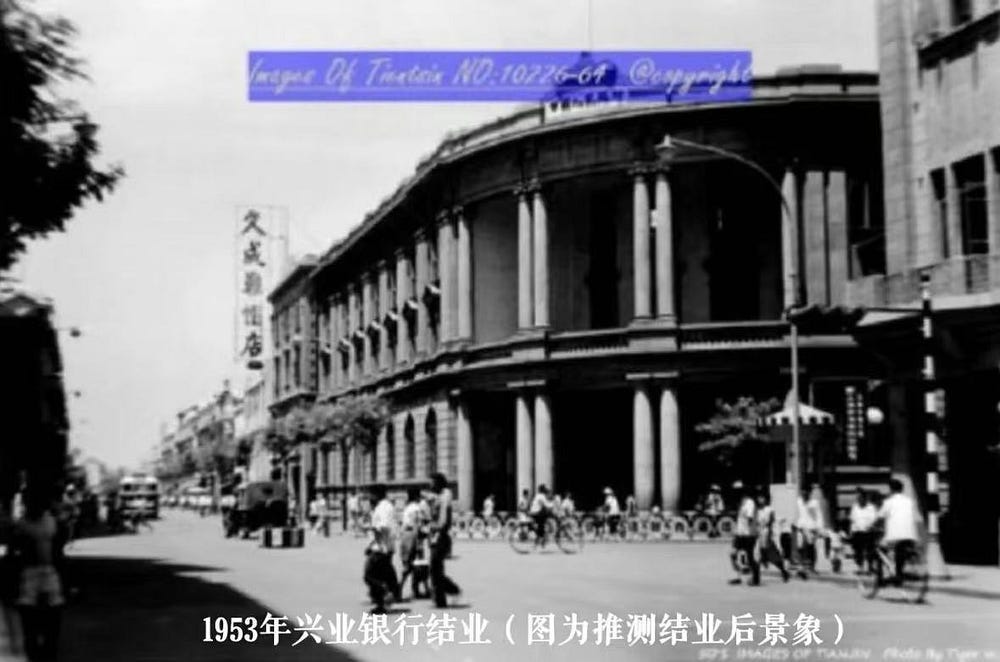

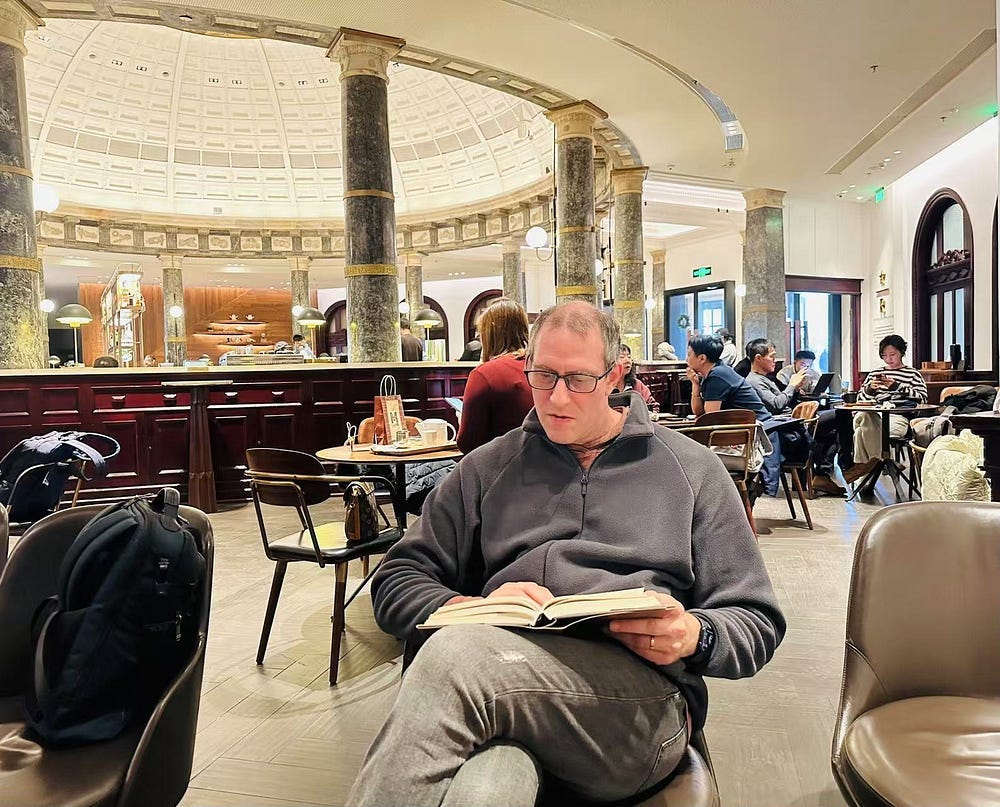
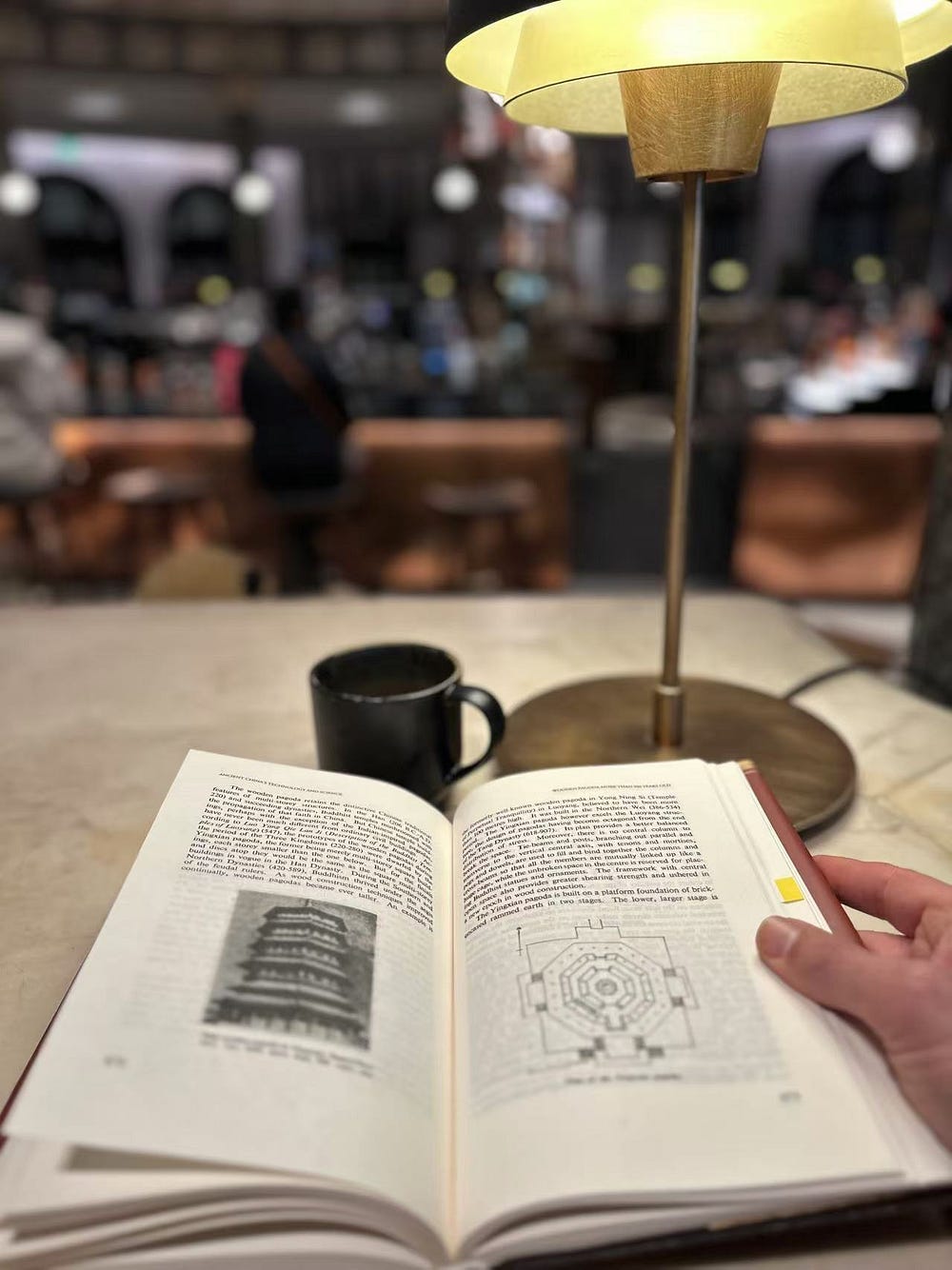
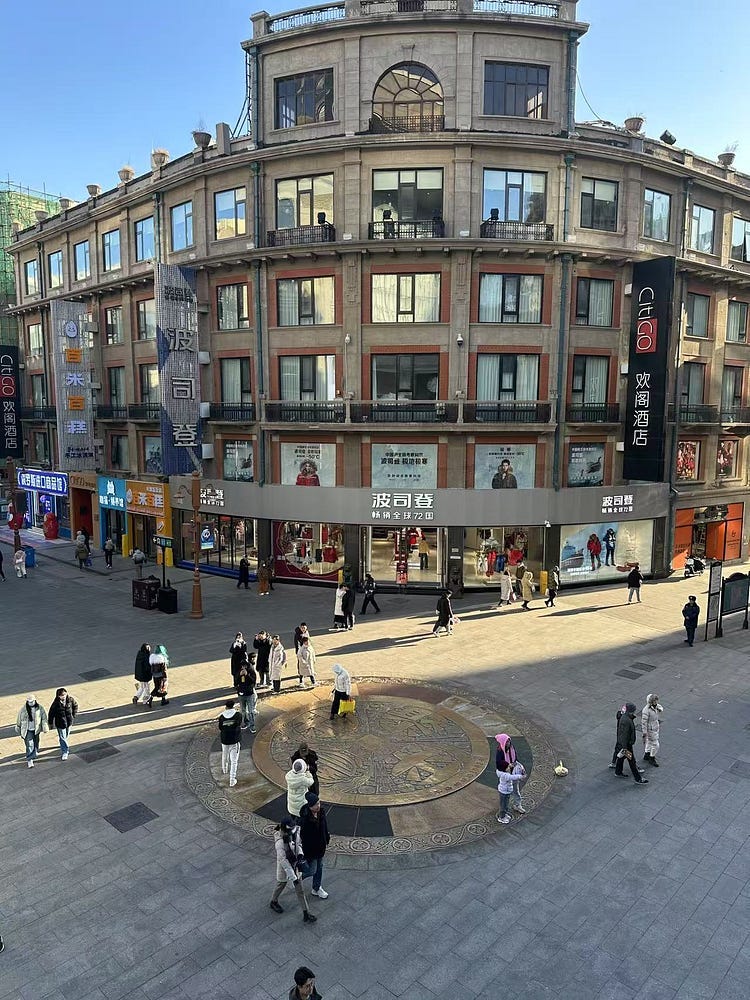
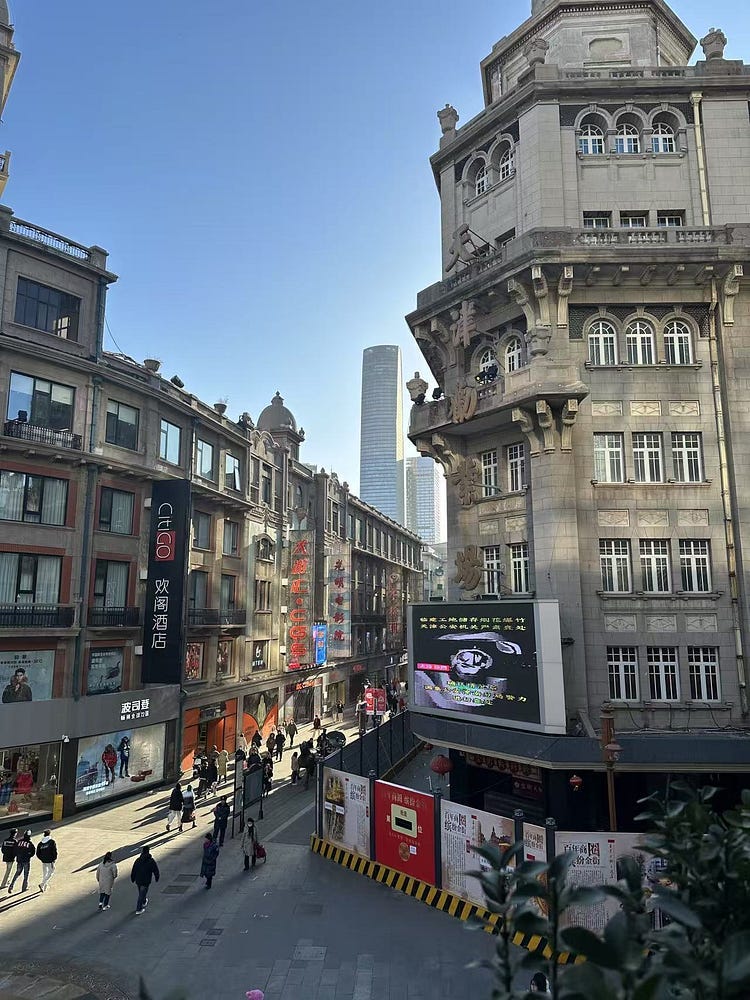
Another great read - came for the history of science and technology of Ancient China, stayed for the modern history of English language reading material in Shenzhen!
This one certainly made me smile. I recall well the excited feeling of walking into the Eslite bookshop in Suzhou when Eslite opened there - so many books! You found yourself a treasure! And Starbank. Gotta love it. Reminds me of the time when someone decided to build a fake Starbucks next to my place of work in Suzhou. they put the U upside down but everything else was a replica - we dubbed it Starbunks. Unfortunately for whomever built it, it was at the time when intellectual property rights were beginning to be a bit more of a thing in China, and StarbuNks never opened.